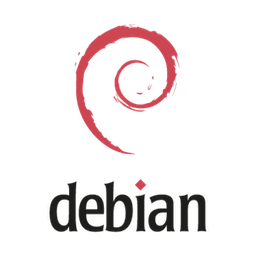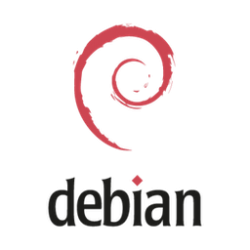
Whether you’re a seasoned developer or just starting your web development journey, learning how to install PHP on Debian is an essential skill. PHP powers over 77% of websites worldwide, making it one of the most popular server-side scripting languages. In this comprehensive guide, we’ll walk you through every step of installing PHP on Debian, from basic installation to advanced configuration techniques.
What is PHP and Why Install it on Debian?
Understanding PHP’s Role in Web Development
PHP (PHP: Hypertext Preprocessor) is a versatile, open-source scripting language designed specifically for web development. It’s the backbone of popular content management systems like WordPress, Drupal, and Joomla. When you install PHP on Debian, you’re essentially setting up a powerful foundation for dynamic web applications.
Think of PHP as the engine of your car – while users see the sleek exterior (your website), PHP is what makes everything run smoothly under the hood. It processes user requests, interacts with databases, and generates dynamic content that makes modern websites interactive and engaging.
Why Choose Debian for PHP Development
Debian stands out as an excellent choice for PHP development for several compelling reasons. First, it’s renowned for its stability and security – two critical factors when running production web applications. Debian’s package management system ensures that you get well-tested, secure versions of PHP and its extensions.
Additionally, Debian’s long-term support releases provide consistent environments that many hosting providers prefer. This means the PHP installation process you learn today will remain relevant for years to come.
Prerequisites Before Installing PHP on Debian
System Requirements
Before diving into the PHP installation process, let’s ensure your Debian system meets the necessary requirements. You’ll need a Debian system running version 9 (Stretch) or newer, though we recommend using Debian 11 (Bullseye) or Debian 12 (Bookworm) for the best experience.
Your system should have at least 512 MB of RAM, though 1 GB or more is recommended for development work. You’ll also need approximately 200 MB of free disk space for a basic PHP installation, though this requirement increases significantly when installing additional extensions and frameworks.
Required Permissions and Access
To install PHP on Debian successfully, you’ll need administrative privileges on your system. This typically means having access to the sudo command or the root account. If you’re working on a shared hosting environment, you might need to contact your hosting provider for PHP installation or version changes.
Checking Your Debian Version
Before proceeding with the installation, verify your Debian version by running this simple command:
lsb_release -aThis command displays detailed information about your Debian distribution, including the version number and codename. Knowing your Debian version helps determine which PHP versions are available through the default repositories.
Different Methods to Install PHP on Debian
Package Manager Installation (APT)
The most straightforward way to install PHP on Debian is through the Advanced Package Tool (APT). This method automatically handles dependencies and ensures you get a version that’s compatible with your Debian installation. APT installation is perfect for most users who want a quick, reliable setup without dealing with compilation complexities.
Source Code Compilation
For advanced users who need specific configurations or the latest PHP features, compiling from source code offers maximum flexibility. However, this method requires more technical knowledge and time investment. You’ll need to manually handle dependencies and configuration, but you gain complete control over the installation process.
Third-Party Repositories
Sometimes, the default Debian repositories don’t include the PHP version you need. Third-party repositories like Ondřej Surý’s PPA provide access to newer PHP versions and additional packages. While convenient, always research third-party repositories thoroughly before adding them to your system.
Installing PHP Using APT Package Manager
Updating Your Package List
Before installing PHP on Debian, always start by updating your package list. This ensures you’re installing the most recent versions available in your configured repositories:
sudo apt updateThis command refreshes the package database, downloading information about the newest versions of packages and their dependencies. It’s a crucial first step that prevents installation issues down the line.
Installing Default PHP Version
To install the default PHP version on your Debian system, use this straightforward command:
sudo apt install phpThis command installs the base PHP package along with essential modules. The default installation typically includes the CLI (Command Line Interface) version of PHP, which is perfect for running PHP scripts from the terminal.
For web development, you’ll likely want to install additional packages:
sudo apt install php php-cli php-fpm php-json php-common php-mysql php-zip php-gd php-mbstring php-curl php-xml php-pear php-bcmathInstalling Specific PHP Versions
Sometimes you need a specific PHP version for compatibility reasons. To install PHP 8.1, for example:
sudo apt install php8.1 php8.1-cli php8.1-common php8.1-mysql php8.1-xml php8.1-curlRemember that specific version availability depends on your Debian version and configured repositories.
Installing Multiple PHP Versions on Debian
Using Ondřej Surý’s PPA Repository
Web developers often need multiple PHP versions for different projects. Ondřej Surý’s repository makes this possible by providing well-maintained packages for various PHP versions:
sudo apt install apt-transport-https lsb-release ca-certificates wget
sudo wget -O /etc/apt/trusted.gpg.d/php.gpg https://packages.sury.org/php/apt.gpg
echo "deb https://packages.sury.org/php/ $(lsb_release -sc) main" | sudo tee /etc/apt/sources.list.d/php.list
sudo apt updateAfter adding the repository, you can install multiple PHP versions simultaneously:
sudo apt install php7.4 php8.0 php8.1 php8.2Managing Multiple PHP Versions
When you have multiple PHP versions installed, you need a way to switch between them efficiently. The update-alternatives system provides an elegant solution:
sudo update-alternatives --install /usr/bin/php php /usr/bin/php7.4 74
sudo update-alternatives --install /usr/bin/php php /usr/bin/php8.1 81Switching Between PHP Versions
To switch your default PHP version, use:
sudo update-alternatives --config phpThis interactive command presents a menu where you can select your preferred PHP version. It’s incredibly useful when working on projects that require different PHP versions.
Installing PHP Extensions and Modules
Essential PHP Extensions
PHP’s power lies in its extensive ecosystem of extensions. Some extensions are essential for most web applications:
- php-mysql: Database connectivity for MySQL/MariaDB
- php-pgsql: PostgreSQL database support
- php-gd: Image processing capabilities
- php-curl: HTTP client functionality
- php-mbstring: Multi-byte string handling
- php-xml: XML processing support
Install these essential extensions with:
sudo apt install php-mysql php-gd php-curl php-mbstring php-xml php-zipDatabase-Specific Extensions
Different projects require different database extensions. For MySQL/MariaDB projects:
sudo apt install php-mysql php-mysqli php-pdo-mysqlFor PostgreSQL applications:
sudo apt install php-pgsql php-pdo-pgsqlInstalling Composer for Dependency Management
Composer is PHP’s de facto dependency manager, essential for modern PHP development:
curl -sS https://getcomposer.org/installer | php
sudo mv composer.phar /usr/local/bin/composer
sudo chmod +x /usr/local/bin/composerVerify the installation:
composer --versionConfiguring PHP After Installation
PHP Configuration File (php.ini)
The php.ini file controls PHP’s behavior and performance characteristics. Different PHP versions and SAPIs (Server Application Programming Interface) have separate configuration files:
- CLI:
/etc/php/8.1/cli/php.ini - FPM:
/etc/php/8.1/fpm/php.ini - Apache:
/etc/php/8.1/apache2/php.ini
To locate your active php.ini file:
php --iniOptimizing PHP Settings for Performance
Several php.ini settings significantly impact performance:
memory_limit = 256M
max_execution_time = 30
upload_max_filesize = 64M
post_max_size = 64M
max_input_vars = 3000These settings balance functionality with resource usage. Adjust them based on your specific application requirements.
Security Configuration Best Practices
Security should be a top priority when configuring PHP. Essential security settings include:
expose_php = Off
display_errors = Off
log_errors = On
allow_url_fopen = Off
allow_url_include = OffThese settings prevent information disclosure and reduce attack vectors.
Testing Your PHP Installation
Creating a Test PHP File
The classic “Hello World” test verifies your PHP installation:
Create /var/www/html/info.php:
<?php
phpinfo();
?>This script displays comprehensive information about your PHP installation, including version, loaded extensions, and configuration settings.
Command Line Testing
Test PHP from the command line:
php -vThis command displays your PHP version and build information. For a more comprehensive test:
php -mThis lists all loaded PHP modules, helping verify that your required extensions are properly installed.
Web Server Integration Testing
If you’re using PHP with a web server like Apache or Nginx, access your test file through a browser:
http://your-server-ip/info.phpSuccessfully displaying the phpinfo() output confirms that your web server can properly execute PHP scripts.
Troubleshooting Common Installation Issues
Package Dependency Problems
Dependency conflicts occasionally occur during PHP installation. If you encounter dependency issues:
sudo apt --fix-broken install
sudo apt autoremove
sudo apt autocleanThese commands resolve most dependency problems by fixing broken packages and cleaning up obsolete files.
Permission and Access Issues
Web server permission problems are common when installing PHP. Ensure your web server has proper permissions:
sudo chown -R www-data:www-data /var/www/html
sudo chmod -R 755 /var/www/htmlVersion Conflicts Resolution
When multiple PHP versions cause conflicts, identify which packages are causing issues:
dpkg -l | grep phpRemove conflicting packages and reinstall cleanly:
sudo apt purge php*
sudo apt autoremove
sudo apt install phpBest Practices for PHP on Debian
Security Hardening
Implement these security measures after installing PHP on Debian:
- Regular Updates: Keep PHP and extensions updated
- Disable Unnecessary Extensions: Remove unused PHP modules
- Configure Error Handling: Log errors without displaying them
- Implement Input Validation: Always validate user input
- Use HTTPS: Encrypt data transmission
Performance Optimization
Optimize your PHP installation for better performance:
- Enable OPcache: PHP’s built-in opcode cache
- Tune Memory Settings: Adjust memory_limit appropriately
- Optimize Database Connections: Use connection pooling
- Implement Caching: Use Redis or Memcached for session storage
- Monitor Performance: Use tools like New Relic or Blackfire
Frequently Asked Questions (FAQs)
Q1: Can I install multiple PHP versions simultaneously on Debian?
Yes, you can install multiple PHP versions on Debian using third-party repositories like Ondřej Surý’s PPA. Use the update-alternatives system to switch between versions as needed for different projects.
Q2: What’s the difference between php-fpm and mod_php?
PHP-FPM (FastCGI Process Manager) runs as a separate process and is generally more secure and efficient, especially for high-traffic sites. mod_php runs as an Apache module and is simpler to configure but uses more memory.
Q3: How do I check which PHP extensions are currently installed?
Run php -m from the command line to list all loaded PHP modules, or create a PHP file with phpinfo() and access it through your web browser for a comprehensive overview.
Q4: Is it safe to use third-party repositories for PHP installation?
While third-party repositories like Ondřej Surý’s are widely trusted in the PHP community, always research repositories before adding them. They provide newer PHP versions but may have different security update schedules than official Debian packages.
Q5: How often should I update PHP on my Debian server?
Update PHP regularly, especially for security patches. Follow the official PHP security announcements and Debian security updates. For production servers, test updates in a staging environment first to ensure compatibility with your applications.
